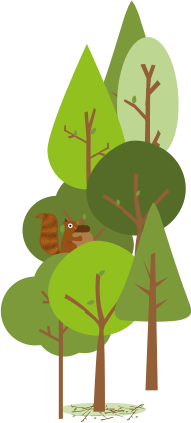

Holiday Forest School Frequently Asked Questions
31st October 2024
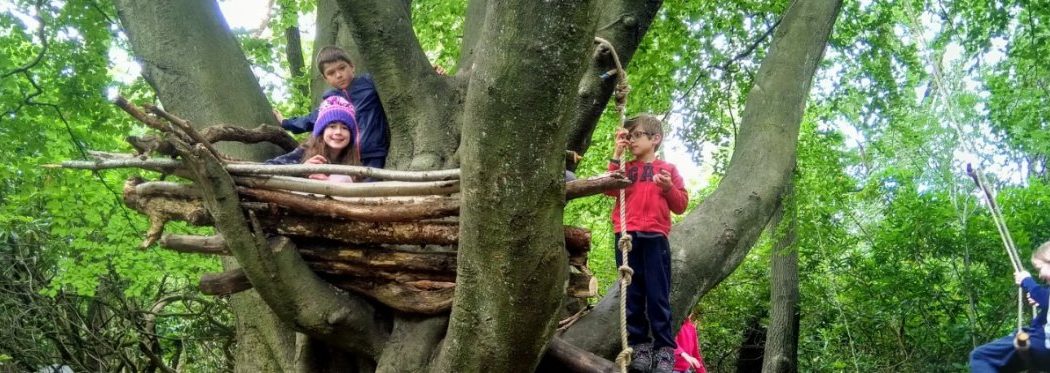
Our Holiday Forest School programme is a mainstay of the school holidays at Get Out More. We’ve been running programmes in all seasons in an all outdoor setting since 2010, so we’ve had plenty of questions about how it works and how we keep children safe. Which is why we have compiled a collection of the most frequently asked questions and put them together in this blog post!
Does forest school continue in all weathers?

Forest school provides an all-outdoor experience in any weather, including rain and snow. Dressing in layered clothing with good waterproofs and footwear protects participants from the worst of the weather. Our leaders monitor weather conditions and the children’s responses. If it rains, we set up tarps for shelter and encourage activities like den building and games as its best to keep active. In very cold or wet weather, we light a campfire and serve hot chocolate, or even take the group on an active walk to keep moving!
We closely watch the weather forecast, acting in line with our risk assessments, only cancel if heavy rain or strong winds pose a danger such as falling branches. Occasionally, we recommend collecting children who become too cold and unhappy, but most cope well, and relish adverse weather conditions when dressed appropriately. For more information, check out our “What happens when it rains at forest school” blog.
Can parents come with their child to forest school?
Forest School is just for kids! Our holiday programmes focus on play-based activities that encourage child-led learning and discovery. We find that children often behave differently when parents are present, relying on them for support instead of making new friends and using their own initiative. This can prevent them from gaining benefits like independence, self-reliance, and confidence. If you’re concerned about how your child will adjust, please discuss it with us. Our practitioners are skilled observing children and spotting those that need more support and helping children integrate and overcome challenges. We’ve often seen shy or less confident children transform through forest school.
Can my 4-year-old come to Holiday forest school?
We can accept children on holiday forest schools once they start primary school, as by Reception class, they typically have the skills, independence, and resilience for a full day. Our ratios are generally 1:8, which means we don’t have enough staff to provide the necessary support for preschool children. Children need to manage basic needs like using the toilet and putting on their coats independently and be able to be away from their parents for five hours. While our publicity states that Forest School is for ages 5 and over, we do allow 4-year-olds to join once they have started school. Check our dates here!
Can my 12-year-old come to Holiday forest school?
Yes! We advertise the programmes as for primary school age children, but find that many of our regulars still want to come when they are in Years 7 and 8. 12 and 13 year olds are welcome to come to our holiday forest school, but should be aware that they may be the oldest there.
Why can’t I book individual days?
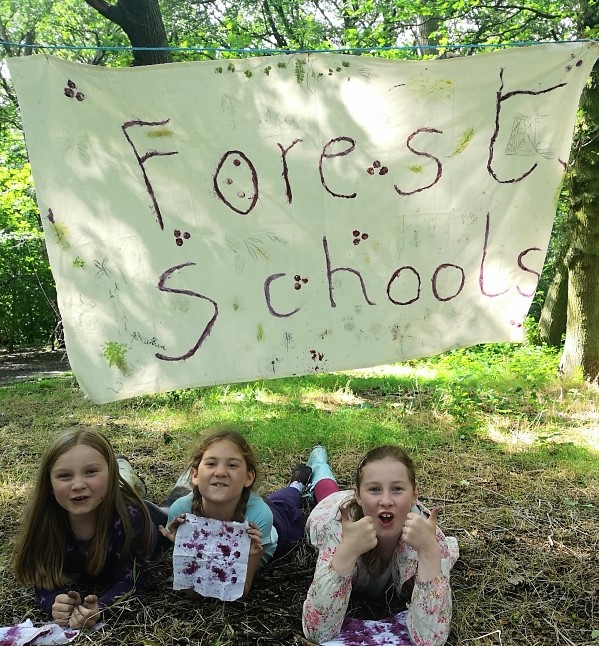
What should my child wear to forest school?
Layered clothing is important in all weathers – they can always take layers off if too warm. When it is cold, an extra thermal layer beneath long trousers (not jeans) and long-sleeved tops and fleeces is ideal. A waterproof coat is essential all year round and waterproof trousers are great if you have them. We recommend a warm hat, gloves, and sturdy boots; hiking or snow boots are better than wellies in cold weather. In summer, wear lightweight, long-sleeved tops and trousers to protect against scratches and insect bites. The woods can be cooler on hot days, and in the UK, we can’t guarantee dry weather! Clothes can get very muddy, so be prepared to need to wash them, and avoid letting children wear their favourite outfits.
What should I pack in their bag for forest school?
Children need to bring a packed lunch, drink and some spare clothes. That’s all they need for a day in the woods. If children bring other items such as toys, electronic devices or phones there is the risk of things being lost in the woods. Please do not allow them to bring any knives or tools as we have our own tools which we closely supervise.
Do you take childcare vouchers?
Unfortunately, we are unable to take childcare vouchers. To participate in the scheme, we would need to be OFSTED registered, as we don’t have a permanent site and operate at many locations the logistics of this would be unrealistic.
What if my child has additional needs?
We aim to be inclusive and enable any child to participate in forest school. It is important that you provide any information that will help us care for your child during their day at forest school by including it on the booking form. This should include details about food allergies, disabilities, behaviour issues, or anything else that our leaders should be aware of. Thank you! If your child needs one-to-one support, please contact us and we will do our best to find additional staff. Many children with additional needs regularly attend our forest schools, but we cannot guarantee a place without sufficient staff and we do not want to compromise anyone’s safety by not having the staff to support all the children who attend.
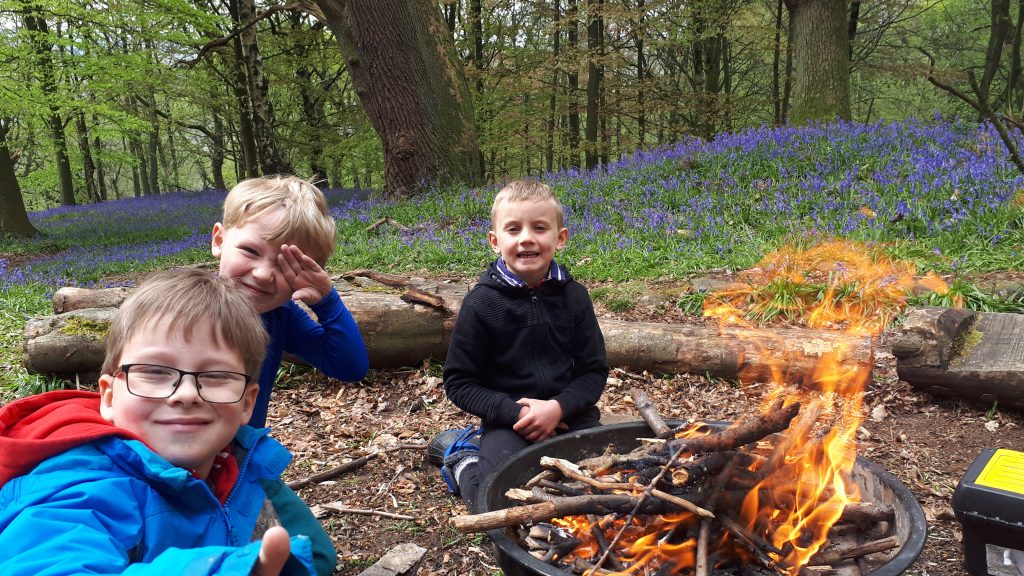
How do you minimise the risks and keep children safe?
At forest school, we encourage children to develop their awareness of safety by taking managed risks in a controlled environment. We carry out risk assessments for all our activities and sites and have a range of policies and procedures for specific activities e.g. tool use and fire. Our qualified and experienced forest school leaders conduct ongoing risk assessments to ensure all participants can take part safely, adapting to changing conditions.
We also encourage children to assess risk for themselves, with close adult guidance. In our introduction, we help the children think about how they can stay safe. We provide appropriate safety equipment such as gloves for using tools and teach the children to use them safely and closely supervise their use. Risks are minimised, but they can’t be eliminated. Occasional cuts and bruises are part of Forest School, balanced by benefits like exploration, independence, self-confidence, and enjoyment. We keep a record of accidents and near misses to inform parents and help us with our future risk assessments.
What rules do you have at forest school?
The rules of forest school can be broken down into 3 main areas. These are to look after yourself, look after each other and look after the environment. Underneath these overarching rules, there are specific rules particularly relating to fires, tool use and tree climbing. These are discussed at the beginning of the day and the boundaries within which children are allowed to play are also specified to keep children safe. If rules are broken, we include children in discussion about it, and find that through a community-based approach, our participants buy in to the ethos.
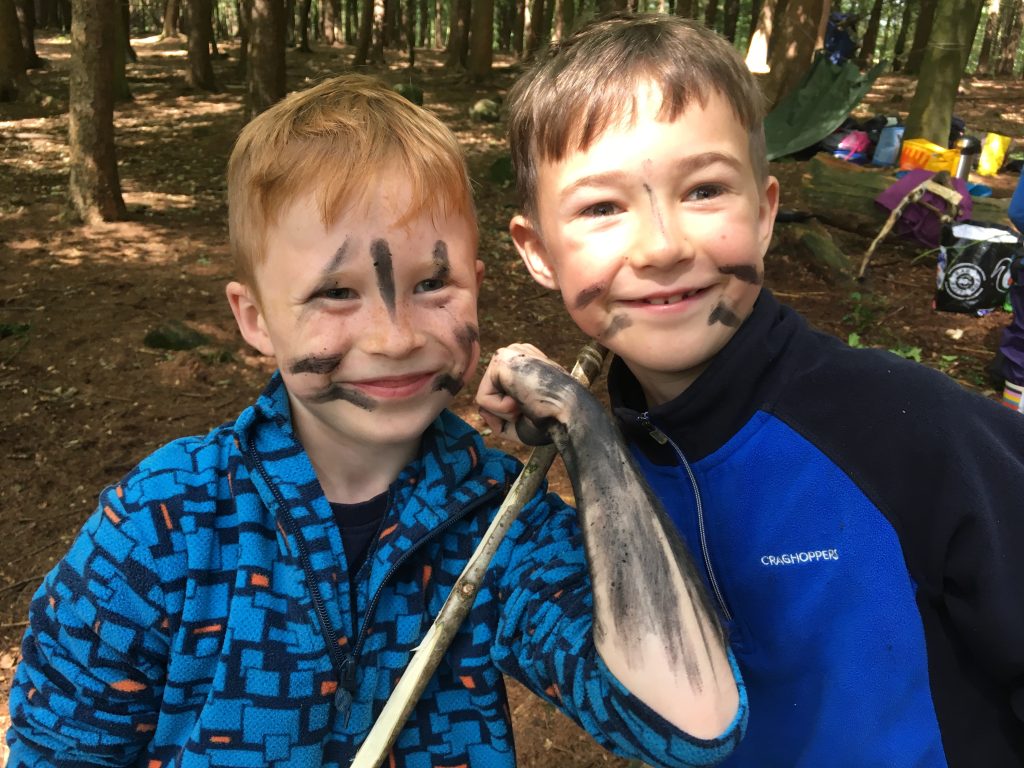
Why do children choose all their own activities at forest school?
One of the principles of forest school is that it is child led. This means that participants have an active role in the development of sessions and can choose what activities they would like to do. Forest school practitioners provide a choice of equipment, suggested ideas and support when necessary and children are free to choose what activities they would like to do. After the very defined structures of a school and other clubs, children respond well to this freedom and choice.
Why can children eat lunch when they like at forest school?
As activities are child led, we also allow children to decide when they would like to eat. This enables us not to interrupt their activities if they are busy being creative or engaged in an activity and means that they are listening to their bodies about when they need to eat. We do try to suggest they save some for later if they are getting lunch boxes out straightaway and we also remind them in the afternoon to eat if they haven’t already had their lunch.
Where do children go to the toilet?
There are generally no toilet facilities in the woods. Please advise your child beforehand that behind a tree in a concealed area of the woods is the usual method! If your child is young or not used to the outdoor method of going to the toilet, it is a good idea for them to have a practice beforehand – especially if they will be dressed in an all-in-one waterproof! We can deal with accidents and offer discreet support if children request it. (Please pack change of clothes if this may be an issue for your child). For hygiene purposes we carry water and hand washing equipment for children to use after toileting and before eating.
What are the benefits of forest school?

Children often get very little time for free play outdoors during the school week. Forest school encourages children to be physically active with lots of activities to develop both fine and gross motor skills. Children also learn to assess, appreciate and take risks, making sensible and informed decisions. They learn to be independent and develop new skills, which boosts their confidence and self-esteem. Through trial and error they learn to deal with failure and develop resilience by keeping going. Children also benefit by just being outdoors; a strong body of evidence has shown being in woodland surrounded by nature improves mental health and wellbeing.
What qualifications do your forest school leaders have?
All of our forest school leaders are qualified to Level 3 in Forest School Programme Leadership and have an up to date Paediatric and Forest School First Aid certificate. The support practitioner is likely to be also be level 3 qualified, but may have a lower qualification or be currently training to be a Level 3 practitioner . A forest school programme is usually staffed by two qualified leaders and a volunteer who are all DBS checked and covered by our insurance.
What if I need to swap days or I can’t make it?
Please take care to book your child onto the correct Holiday Forest School as we may have several on offer! We can only swap your child onto another forest school if a place is available. Refunds are in line with our cancellation policy (below). If there is a waiting list and we can rebook your place, we will refund your money, minus our administration fee. If you know someone who can take your child’s place, you are welcome to arrange a direct swap. However, we need the registration information for the new child, including consent and contact details, before they can attend.
Customer cancellation: If you decide to cancel due to sickness or changes of plan, our cancellation policy is as follows:
- Cancellations with more than 14 days notice, we will issue a refund less a 10% admin fee.
- Cancellations with between 13 and 7 days notice, we will issue a 50% refund
-
Cancellations made with less than 7 days notice will not be refunded.

